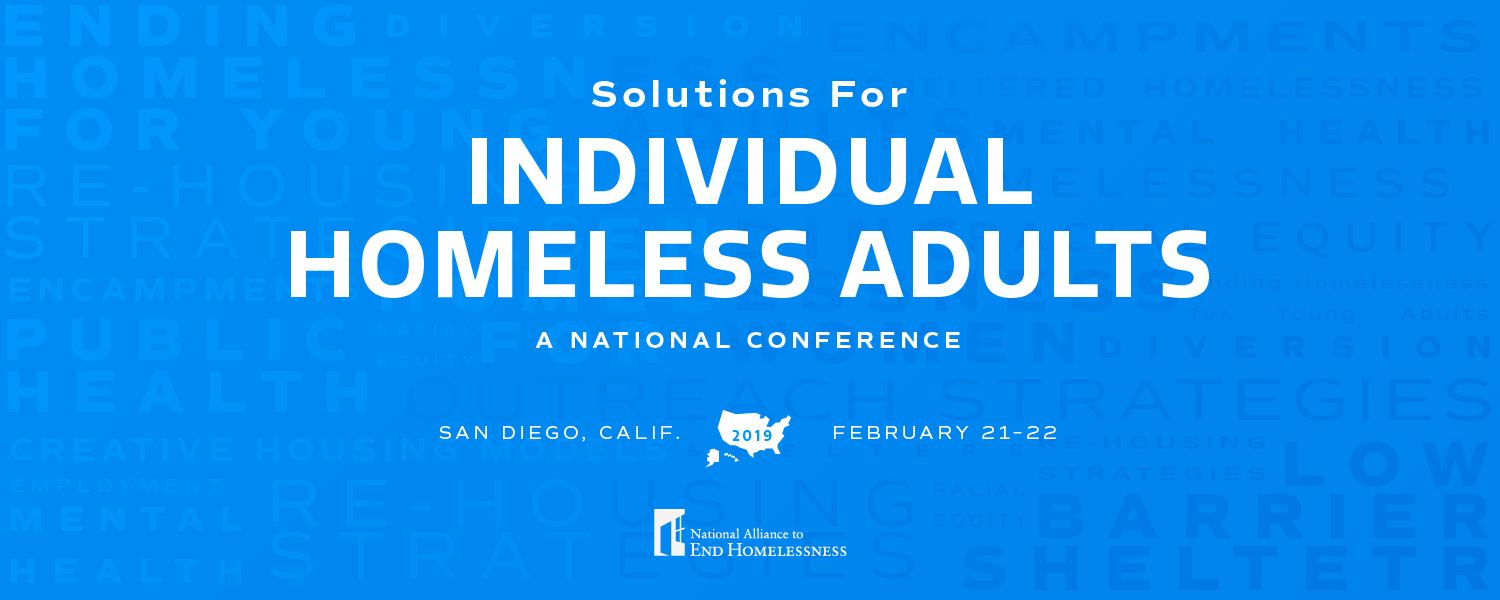A few years ago, the Alliance began to direct more time and resources to thinking about “everyone else” experiencing homelessness: people who were not chronically homeless, or were not experiencing homelessness as part of a family, or as a veteran, youth, or young adult.
Not coincidentally, this represents the largest group of people experiencing homelessness, especially unsheltered homelessness.
We knew we needed to know more about this population. And we knew we needed to collaborate with national, state, and local partners to develop a strategy to end their homelessness. But we also suspected that we didn’t need to reinvent the wheel: there has been incredible progress for individuals within specific subgroups, like veterans, people experiencing chronic homelessness, and young adults.
The difference is that those groups have dedicated federal (and often state and local) resources and plans. And the rest of the population of individual adults (i.e., “everyone else”) doesn’t.
One Big Question (and three big take-aways)
So, how do we leverage what we know about those groups to better serve the broader population of individuals?
This was the big question at the Alliance’s inaugural Solutions for Individual Homeless Adults conference, last month in San Diego. Upon reflection, there were three big issues that rose to the fore:
1. Housing First Works
Everyone at the conference — the HUD Secretary, the USICH Director, advocates with lived experience, shelter directors, case managers, and systems leaders — reinforced that a Housing First approach is essential.
Housing First works because it flips the traditional “housing ready” approach on its head. It doesn’t insist that homeless people somehow aren’t ready for housing. It insists that a person is ready for housing because it is a foundational human need. And then, with that need met, we can work together to meet any other change that person wants to make in their life.
One of the most profound (and often unexamined) aspects of the Housing First approach is how it shifts the power to the person experiencing homelessness. The provider-client relationship is too often inherently unequal, especially when the clients are literally made homeless again if they don’t adhere to program requirements. Housing First re-balances the power toward the client: the client determines what services she needs and what changes she wants to make, including whether or not to abstain from intoxicating substances.
2. We Must Confront Racial Disparities
Speaking of unequal power dynamics, much of the conference content focused on addressing racial disparities among people experiencing homelessness. Even when workshops topics weren’t explicitly about race, speakers and attendees elevated the issue. That way, we could all help ensure that our work does not perpetuate inequitable outcomes.
The Alliance will continue to move these efforts forward with its new Racial Equity Network, which is developing a simple tool to help communities determine whether people of color disproportionately experience homelessness, AND whether homelessness programs and systems have disproportionate outcomes.
One system in which we know structural disparities exist is the criminal justice system. We also know that it can be a feeder into homelessness. Recent research from the Prison Policy Initiative highlights how those disparities are exacerbated in the homelessness system. So, this year’s conference explored solutions for people reentering our communities from prison. Thanks to the recent Second Chance Act reauthorization (and its more robust focus on housing), momentum will grow to address disparate housing outcomes for people with criminal justice involvement.
3. Share Your Unsheltered Strategies
Almost half of individual homeless adults are unsheltered. The rise of unsheltered homelessness (and especially large encampments) has reached crisis proportions, resulting in public health crises and even federal consent decrees.
To make matters worse, there are far too few resources dedicated to individuals. Accordingly, multiple workshops at the conference explored what we know (and don’t know) about unsheltered individuals, how communities should address the issue of encampments, ways to ramp up shelter capacity, and how to understand that “more shelter beds” isn’t the entire answer to unsheltered homelessness.
We also know that most individuals who experience homelessness, including those unsheltered, are unlikely to receive a housing intervention funded by the homelessness system. So, the conference highlighted innovative alternatives like diversion, family reunification, and non-traditional affordable housing options. These are options that communities should ramp up. They improve the likelihood that everyone who needs assistance will at least be connected to other resources, while still ensuring that we can direct housing assistance to people for whom there are no other options.
One More Impression
Perhaps it wasn’t a key take-away, but I can’t conclude this post without mentioning the great pleasure to have Emilio Estevez participate in a conference plenary and screening of the new movie, The Public. We’ve known for a while that public libraries play a vital role in addressing homelessness (especially for individuals). But watching this film with our partners in this mission was profound – especially at a time when homeless individuals routinely have their rights threatened to exist equally in public spaces.
Taking Action
Even though this conference was a success, there is an immense amount of work ahead. As we take that work on, we’ll be constantly reminded that there aren’t anywhere near enough resources for the individual adult population. Whether you attended or not, we encourage everyone to sign up for the Alliance’s Advocacy Alerts, so that we can secure the funds we need to end homelessness for individual adults.
On behalf of the Alliance, thanks to all who participated in the Alliance’s first Solutions for Individual Homeless Adults conference!

